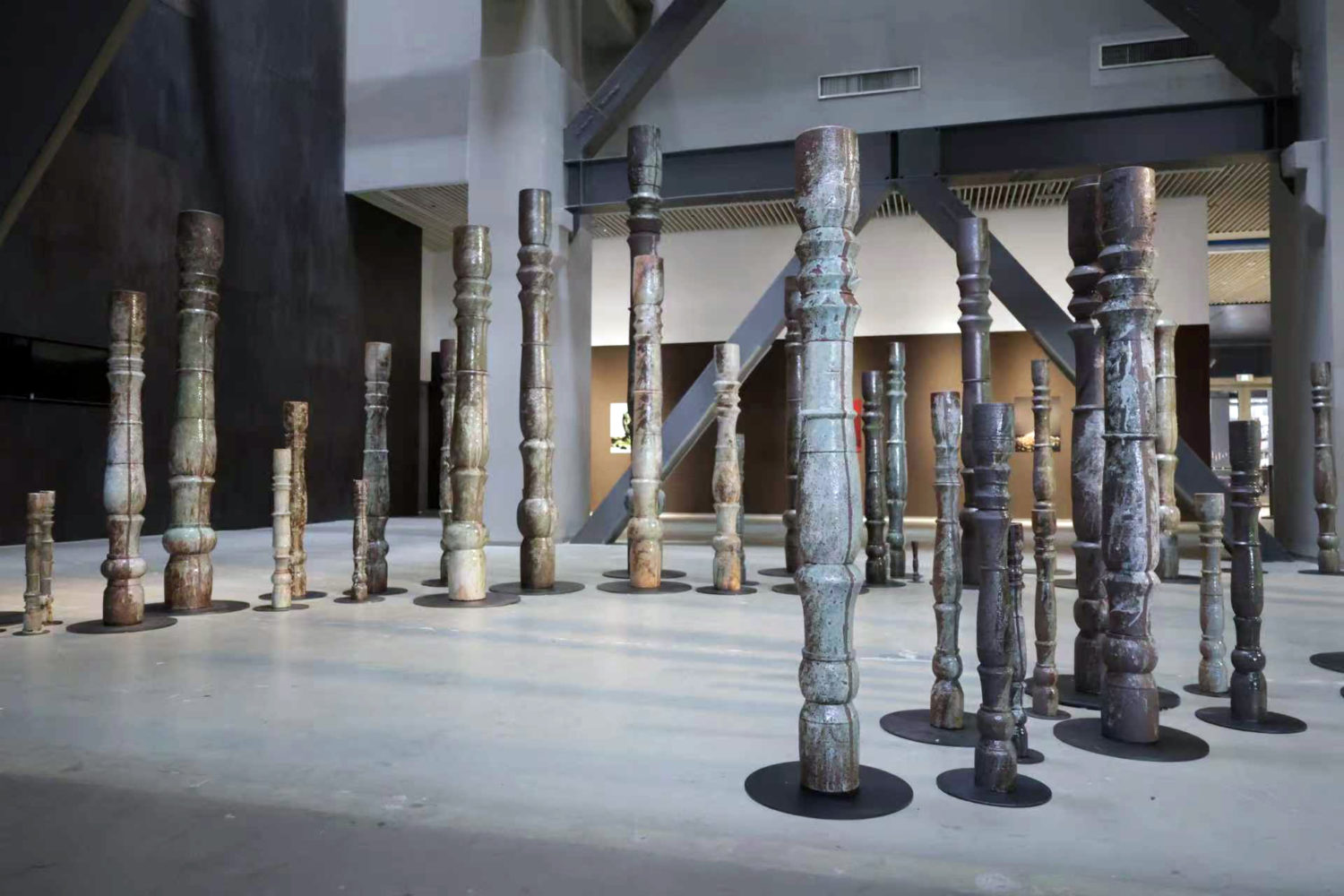Jaffa Lam at 15th Shanghai Biennale
News content
Jaffa Lam at the 15th Shanghai Biennale
8 November 2025 - 31 March 2026
Jaffa Lam is participating in the 15th Shanghai Biennale, titled “Does the flower hear the bee?” at Power Station of Art. Curated by chief curator Kitty Scott and co-curators Xue Tan and Daisy Desrosiers, this edition features over 250 works by 67 individual artists and collectives from around the globe.
In 2024, Jaffa Lam began a one-year ceramics residency in Longquan, China. Renowned for its long history of celadon porcelain, Longquan offered Lam an unprecedented opportunity to explore the mediums of clay and glaze from a fresh perspective. During the residency, she created the Windbreak series for the Shanghai Biennale, consisting of ceramic sculptures ranging from ten centimeters to four meters in height. Inspired by Lam’s artistic interest in cultural, historical, and material memory, the forms are derived from the shapes of stair handrails commonly found in old Shanghai mansions. Arranged from smallest to largest, they reflect the artist’s process of expanding from domestic objects to broader societal scales. For the artist, this shape evokes windbreaks that resist the wind, as well as forms that divide interior and exterior spaces within the home. Unconstrained by the frameworks of ceramic craft, Lam mixed clays in her own distinctive way and applied glazes freely, making each piece unique. She also regards each sculpture as an individual: some sit upright and composed, others lean slightly backward, as if confronting an invisible force.
Artist’s Statement
"I always examine objects in the city that symbolize nomadism from my personal perspective—oyster buckets, windows, water pipes, umbrellas, second-hand clothes, shopping carts. They function and operate for the city, just like people. When I saw the triangular steel structure of the Power Station of Art in Shanghai, I thought of the Chinese character “人” (person). As an artist, I repeatedly ponder questions like: How to connect people? How to make the invisible visible? I believe art can serve as a bridge of connection. I visited many urban buildings in Shanghai. Old complete mansions were later divided into multiple small apartments for numerous households, a phenomenon that caught my attention. These houses are just a few blocks away from meticulously renovated buildings, yet the residents live vastly different lives. I became fascinated by the legally built and illegally added staircases in multi-occupancy apartment buildings; they connect history and people. To me, staircases represent the working class and forgotten groups, but at the same time, they link the past and present in a profoundly meaningful and memorable way. From this angle, they function like art—as bridges."
